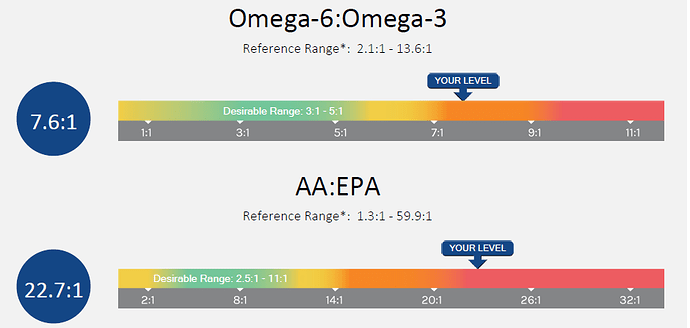Listened to this podcast with Nina Teicholz:
https://www.ihmc.us/stemtalk/episode-52/
At about 1 hour, 15 minutes, she discusses a chapter she left out of her book about Omega 3s. Basically, she says that there is no science to support that they are beneficial.
That seems reasonable to me, as I have seen large RCTs with excellent O3 supplements, with no benefits.
After this, they discuss the O3/O6 ratio. They state that the best way to make this better is to reduce your O6 content via eating fewer seed oils, for instance.
For this, I disagree. I have been avoiding seed oils for YEARS. If something has seed oils in it, I don’t eat it. I do, however, still eat some chicken and pork, and eat out at times. All of those have seed oils in them.
Here’s my ratio from 11/6/2020 (5.62):
Here’s my ratio from 8/20/22:
If the “desirable range” actually is desirable for us low carb folks (remember, all of these studies are on high carb folks), I’m nowhere near that, and I assiduously avoid PUFAs. On the other hand, I don’t eat much fish.
Your thoughts on this ratio? Is it actually better to have a higher ratio?
If so, for me, the only way I can do it is by eating more fish. I have seen people who eat nothing but grass-fed (only) beef, and they get good ratios, but I can’t afford that.
By the way, when I got the ratio in 2020, I had gained 20+ pounds trying the croissant diet and eating a ton of saturated fat; pants ballooned to 38 waist; for the one in 2022, I had lost all that and got back into all of my 34 pants. So, the ratio does not seem to matter at least from a weight loss/gain perspective.




